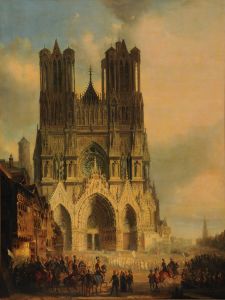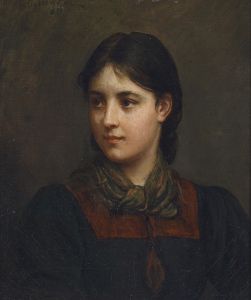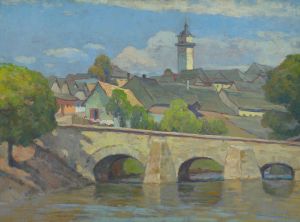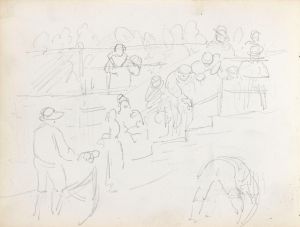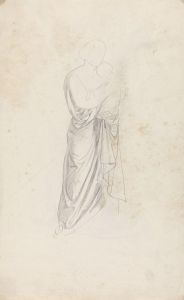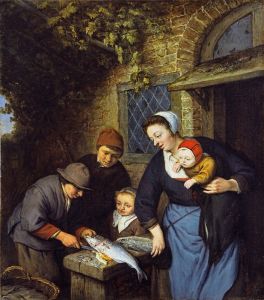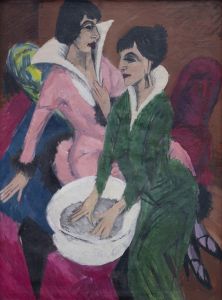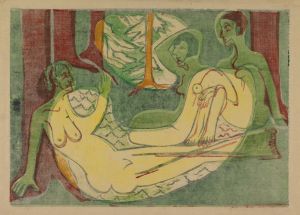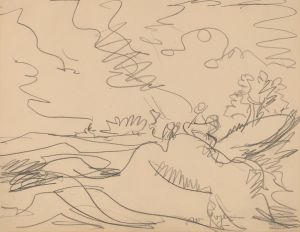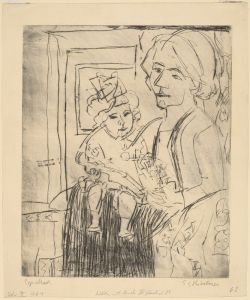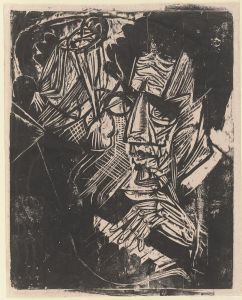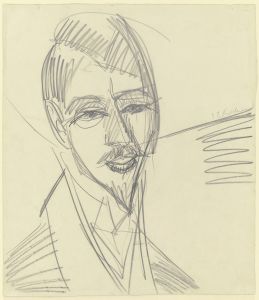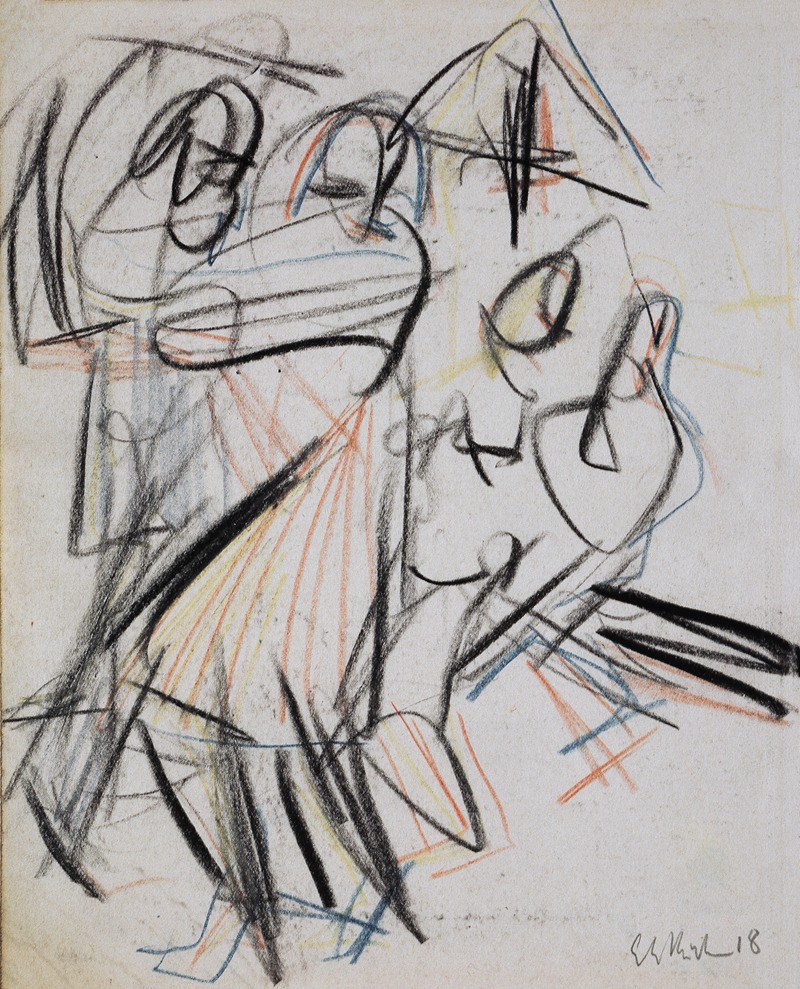
Vier tanzende Bauern
A hand-painted replica of Ernst Ludwig Kirchner’s masterpiece Vier tanzende Bauern, meticulously crafted by professional artists to capture the true essence of the original. Each piece is created with museum-quality canvas and rare mineral pigments, carefully painted by experienced artists with delicate brushstrokes and rich, layered colors to perfectly recreate the texture of the original artwork. Unlike machine-printed reproductions, this hand-painted version brings the painting to life, infused with the artist’s emotions and skill in every stroke. Whether for personal collection or home decoration, it instantly elevates the artistic atmosphere of any space.
Ernst Ludwig Kirchner's painting Vier tanzende Bauern (Four Dancing Peasants) is a work created by the German Expressionist artist, who was a founding member of the influential art group Die Brücke (The Bridge). This group, established in 1905, sought to break away from traditional academic art and embraced a more modern, expressive style that emphasized emotional intensity and bold, simplified forms.
Vier tanzende Bauern is a vivid example of Kirchner's exploration of movement, rural life, and the human figure. The painting depicts four peasants engaged in a lively dance, their bodies rendered in dynamic, angular forms that convey a sense of rhythm and energy. Kirchner's use of exaggerated proportions and simplified shapes reflects his interest in capturing the essence of his subjects rather than adhering to strict realism. The figures are painted with bold, contrasting colors, a hallmark of Expressionism, which heightens the emotional impact of the scene.
The theme of rural life and traditional customs, such as dancing, was a recurring subject in Kirchner's work during certain periods of his career. This interest may have been influenced by a broader cultural fascination with folk traditions in early 20th-century Germany, as well as a desire to reconnect with a perceived sense of authenticity and simplicity in contrast to the rapid industrialization and urbanization of the time.
Kirchner's artistic style was also shaped by his exposure to non-European art, particularly African and Oceanic art, which he admired for its perceived rawness and directness. These influences are evident in the stylized forms and expressive gestures of the figures in Vier tanzende Bauern. The painting exemplifies Kirchner's ability to merge these inspirations with his own innovative approach to composition and color.
The exact date of creation for Vier tanzende Bauern is not definitively documented, but it is consistent with Kirchner's work during the height of his involvement with Die Brücke, which lasted until the group's dissolution in 1913. During this period, Kirchner and his contemporaries sought to challenge conventional artistic norms and create works that reflected their personal experiences and emotions.
Today, Ernst Ludwig Kirchner is regarded as one of the most important figures in German Expressionism, and his works are celebrated for their boldness, emotional depth, and innovative techniques. While specific details about the provenance or current location of Vier tanzende Bauern may not be widely available, the painting remains an important example of Kirchner's exploration of human movement and his contribution to modern art.





